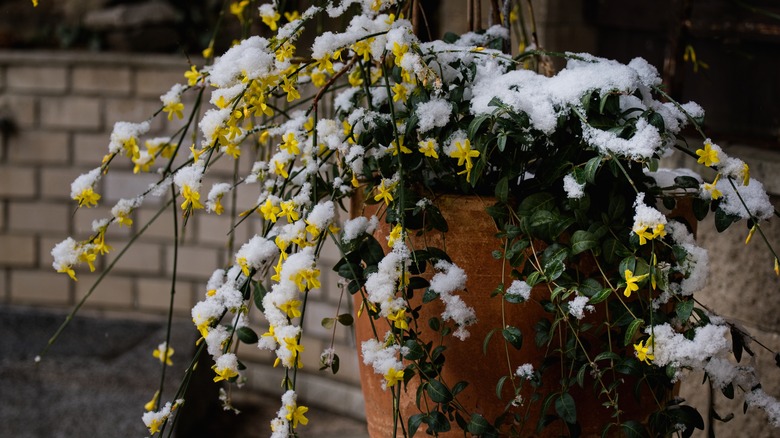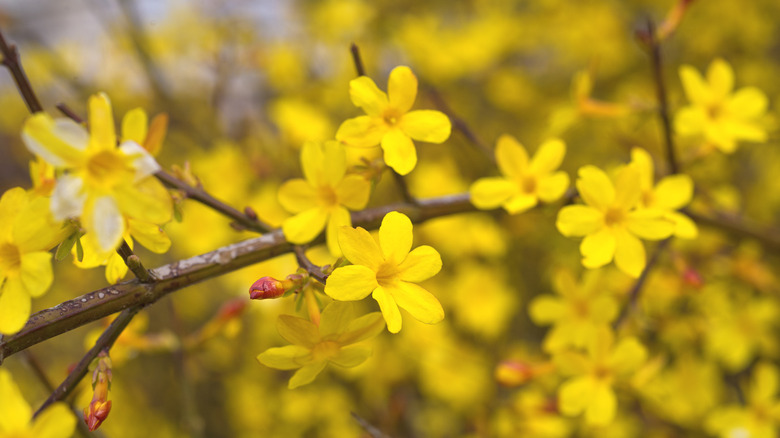It can be challenging to create winter interest for gardens in colder regions. Flowering plants can be especially hard to come by in the depths of winter when many garden favorites have gone dormant. Winter flowering plants do exist, though, and can make a massive difference in adding life and color to barren winter gardens. One of the best winter flowering plants to consider adding to your garden is the beautiful winter jasmine.
Winter jasmine (Jasmine nudiflorum) is hardy in zones 6 through 10, and while it loses its leaves in fall, petite yellow flowers begin appearing on the bare branches in January and February. Unlike many other kinds of jasmine, winter jasmine flowers have little to no scent, but they are still popular with pollinators that aren’t dormant during the months when the plant is blooming. Winter jasmine grows well in clay and sandy soil and can handle shade, making it a perfect option for areas where few other shrubs will grow.
Winter jasmine in the landscape

In addition to the plant’s ability to thrive in winter weather, winter jasmine is also a fantastic addition to gardens because of its remarkable versatility. It grows in a variety of soil and light conditions and can be trained into many different growing habits. Winter jasmine’s long branches can be treated as vines and woven or tied to trellises or other supports. Alternatively, it can be kept neatly trimmed and grown as a shrub in your landscape or as part of a winter container planting. Arguably, one of the best uses for winter jasmine is as a ground cover, though.
Winter jasmine’s long weeping branches will often root into the soil, so allowing the plant to grow as a ground cover doesn’t just look beautiful but can also be a good way to stabilize a slope and prevent erosion. The long branches also look beautiful when allowed to droop over walls and other structures. Without pruning or training, winter jasmine can often grow 4 feet tall and sprawl up to 7 feet wide.
Companion plants for winter jasmine

Winter jasmine can be combined with other winter and early spring blooming bulbs like snowdrops and fritillaria to bring color to your yard during the cold season when few other flowers are blooming. In addition to bulbs, plants like evening primrose and even ornamental kale can make elegant cold-weather companions for winter jasmine, as can red twig dogwood. By stabilizing your slopes and preventing topsoil loss, winter jasmine can also help make your garden a more hospitable location for everything else growing nearby.
While winter jasmine isn’t the most exciting plant once it’s done flowering for the year, it still has appealing foliage and can provide a pleasant green backdrop for spring and summer plants like columbines and hostas. You can also add short and medium-height evergreen plants like coral bells and holly around your winter jasmine. Planting taller evergreens like arborvitae behind your winter jasmine will create an entire garden of color no matter the season.



